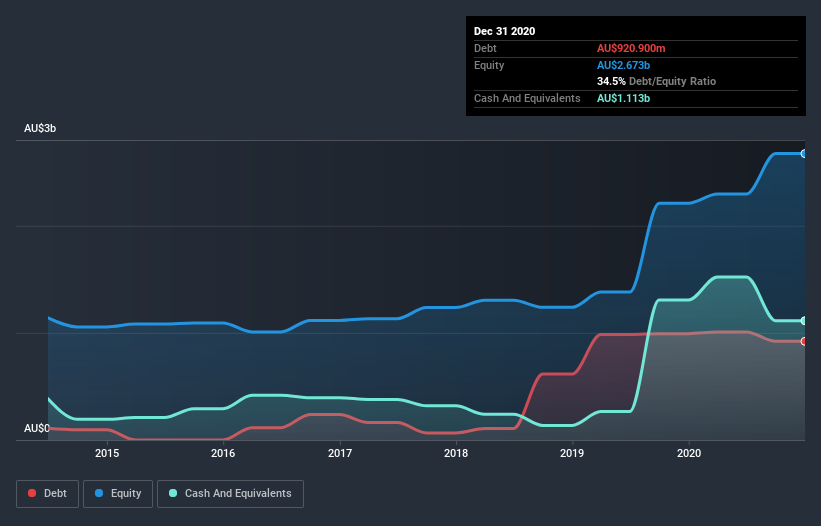Here's Why Mineral Resources (ASX:MIN) Can Manage Its Debt Responsibly
- Oops!Something went wrong.Please try again later.
Some say volatility, rather than debt, is the best way to think about risk as an investor, but Warren Buffett famously said that 'Volatility is far from synonymous with risk.' When we think about how risky a company is, we always like to look at its use of debt, since debt overload can lead to ruin. We note that Mineral Resources Limited (ASX:MIN) does have debt on its balance sheet. But is this debt a concern to shareholders?
Why Does Debt Bring Risk?
Debt and other liabilities become risky for a business when it cannot easily fulfill those obligations, either with free cash flow or by raising capital at an attractive price. Part and parcel of capitalism is the process of 'creative destruction' where failed businesses are mercilessly liquidated by their bankers. While that is not too common, we often do see indebted companies permanently diluting shareholders because lenders force them to raise capital at a distressed price. Of course, the upside of debt is that it often represents cheap capital, especially when it replaces dilution in a company with the ability to reinvest at high rates of return. The first step when considering a company's debt levels is to consider its cash and debt together.
See our latest analysis for Mineral Resources
What Is Mineral Resources's Net Debt?
As you can see below, Mineral Resources had AU$920.9m of debt at December 2020, down from AU$992.8m a year prior. However, its balance sheet shows it holds AU$1.11b in cash, so it actually has AU$192.5m net cash.
How Strong Is Mineral Resources' Balance Sheet?
The latest balance sheet data shows that Mineral Resources had liabilities of AU$645.7m due within a year, and liabilities of AU$1.41b falling due after that. Offsetting this, it had AU$1.11b in cash and AU$355.9m in receivables that were due within 12 months. So it has liabilities totalling AU$589.7m more than its cash and near-term receivables, combined.
Of course, Mineral Resources has a market capitalization of AU$8.07b, so these liabilities are probably manageable. Having said that, it's clear that we should continue to monitor its balance sheet, lest it change for the worse. While it does have liabilities worth noting, Mineral Resources also has more cash than debt, so we're pretty confident it can manage its debt safely.
Better yet, Mineral Resources grew its EBIT by 121% last year, which is an impressive improvement. That boost will make it even easier to pay down debt going forward. When analysing debt levels, the balance sheet is the obvious place to start. But ultimately the future profitability of the business will decide if Mineral Resources can strengthen its balance sheet over time. So if you're focused on the future you can check out this free report showing analyst profit forecasts.
Finally, a business needs free cash flow to pay off debt; accounting profits just don't cut it. While Mineral Resources has net cash on its balance sheet, it's still worth taking a look at its ability to convert earnings before interest and tax (EBIT) to free cash flow, to help us understand how quickly it is building (or eroding) that cash balance. Over the last three years, Mineral Resources saw substantial negative free cash flow, in total. While that may be a result of expenditure for growth, it does make the debt far more risky.
Summing up
We could understand if investors are concerned about Mineral Resources's liabilities, but we can be reassured by the fact it has has net cash of AU$192.5m. And we liked the look of last year's 121% year-on-year EBIT growth. So we don't have any problem with Mineral Resources's use of debt. The balance sheet is clearly the area to focus on when you are analysing debt. But ultimately, every company can contain risks that exist outside of the balance sheet. We've identified 4 warning signs with Mineral Resources (at least 2 which are a bit unpleasant) , and understanding them should be part of your investment process.
Of course, if you're the type of investor who prefers buying stocks without the burden of debt, then don't hesitate to discover our exclusive list of net cash growth stocks, today.
This article by Simply Wall St is general in nature. It does not constitute a recommendation to buy or sell any stock, and does not take account of your objectives, or your financial situation. We aim to bring you long-term focused analysis driven by fundamental data. Note that our analysis may not factor in the latest price-sensitive company announcements or qualitative material. Simply Wall St has no position in any stocks mentioned.
Have feedback on this article? Concerned about the content? Get in touch with us directly. Alternatively, email editorial-team (at) simplywallst.com.


